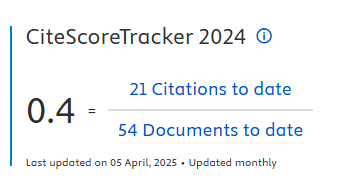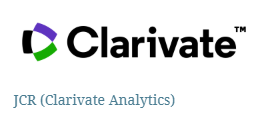Bibliometric analysis on the orchestration of dynamic capabilities
DOI:
https://doi.org/10.5585/iji.v10i4.21381Keywords:
Orchestration of dynamic capabilities, Dynamic capabilities, Asset orchestration, Systematic review.Abstract
Purpose: The overall purpose of this article is to provide an overview of studies related to the orchestration of dynamic capabilities. The specific goal is to identify the main paths for a future research agenda.
Methodology: A bibliometric study and content analysis on Dynamic Capability Orchestration, using software MaxQda, Bibliometrix, and VosViewer. The collected data resulted in a final sample of 54 articles, published from 2003 to 2021.
Results: The results identified four clusters that unfold into 15 research lines. The clusters are: (i) Studies on Business Ecosystems; (ii) Dynamic Capabilities and their Orchestration via Micro-foundations; (iii) Internationalization; and (iv) Technology and Digitalization.
Conclusions: The analysis of the four clusters and the deepening of research paths showed a relationship between clusters, conceptual elements, and orchestration of capabilities, which are presented as a Dynamic Capability Orchestration Model, with an emphasis on the fields of strategy and innovation.
Contributions: The contributions to the studies of dynamic capability orchestration regard the presentation of research clusters that cover the field of study and show routes for future research. These clusters are linked to Business Ecosystems, Orchestration via Micro-foundations, Internationalization, and Technology and Digitalization. Within these groups, there are research flows that articulate referential concepts for creating research lines and new scientific propositions and hypotheses.
Downloads
References
Agarwal, R., & Selen, W. (2013). The incremental and cumulative effects of dynamic capability building on service innovation in collaborative service organizations. Journal of Management & Organization, 19(5), 521-543. https://doi.org/10.1017/jmo.2014.5
Aria, M., & Cuccurullo, C. (2017). bibliometrix: An R-tool for comprehensive science mapping analysis. Journal of Informetrics, 11(4), 959-975. https://doi.org/10.1016/j.joi.2017.08.007
Bardin, L. (2016). Análise de Conteúdo, São Paulo Edições 70.
Brink, T. (2019). Orchestration of dynamic capabilities for competitive advantage. International Journal of Energy Sector Management. https://doi.org/10.1108/IJESM-09-2018-0005
Garbellano, S., & Da Veiga, M. D. R. (2019). Dynamic capabilities in Italian leading SMEs adopting industry 4.0. Measuring Business Excellence. https://doi.org/10.1108/MBE-06-2019-0058
Giudici, A., Reinmoeller, P., & Ravasi, D. (2018). Open-system orchestration as a relational source of sensing capabilities: Evidence from a venture association. Academy of Management Journal, 61(4), 1369-1402. https://doi.org/10.5465/amj.2015.0573
Grácio, M. C. C. (2016). Acoplamento bibliográfico e análise de cocitação: revisão teórico-conceitual. Encontros Bibli: Revista Eletrônica de Biblioteconomia E Ciência da Informação, 21(47), 82-99. https://doi.org/10.5007/1518-2924.2016v21n47p82
Hayter, C. S., & Cahoy, D. R. (2018). Toward a strategic view of higher education social responsibilities: A dynamic capabilities approach. Strategic Organization, 16(1), 12-34. https://doi.org/10.1177/1476127016680564
Helfat, C. E., & Peteraf, M. A. (2015). Managerial cognitive capabilities and the microfoundations of dynamic capabilities. Strategic Management Journal, 36(6), 831-850. https://doi.org/10.1002/smj.2247
Helfat CE, Finkelstein S, Mitchell W, Peteraf MA, Singh H, Teece DJ, Winter SG. 2007. Dynamic Capabilities: Understanding Strategic Change in Organizations.
Helfat, C. E., & Raubitschek, R. S. (2018). Dynamic and integrative capabilities for profiting from innovation in digital platform-based ecosystems. Research Policy, 47(8), 1391-1399. https://doi.org/10.1016/j.respol.2018.01.019
Hermawati, A., & Gunawan, E. (2020). The implementation of dynamic capabilities for small and medium-sized enterprises in creating innovation. VINE Journal of Information and Knowledge Management Systems, 51(1), 92-108. https://doi.org/10.1108/VJIKMS-08-2019-0121
Knopf, J. W. (2006). Doing a literature review. PS: Political Science and Politics, 39(1), 127-132. https://doi.org/10.1017/S1049096506060264
Koufteros, X., Verghese, A. J., & Lucianetti, L. (2014). The effect of performance measurement systems on firm performance: A cross-sectional and a longitudinal study. Journal of Operations Management, 32(6), 313-336. https://doi.org/10.1016/j.jom.2014.06.003
LeCompte, M. D. (2000). Analyzing qualitative data. Theory Into Practice, 39(3), 146-154. https://doi.org/10.1207/s15430421tip3903_5
Lee, J., & Kim, S. J. (2021). How can David orchestrate resources to enhance firm performance? A dynamic approach to coping with resource constraints. Long Range Planning, 102090. https://doi.org/10.1016/j.lrp.2021.102090
Lessard, D., Teece, D. J., & Leih, S. (2016). The dynamic capabilities of Meta‐multinationals. Global Strategy Journal, 6(3), 211-224. https://doi.org/10.1002/gsj.1126
Linde, L., Sjödin, D., Parida, V., & Wincent, J. (2021). Dynamic capabilities for ecosystem orchestration A capability-based framework for smart city innovation initiatives. Technological Forecasting and Social Change, 166, 120614. https://doi.org/10.1016/j.techfore.2021.120614
Ma, X., Zhou, Z., & Fan, X. (2015). The process of dynamic capability emergence in technology start-ups-an exploratory longitudinal study in China. Technology Analysis & Strategic Management, 27(6), 675-692. https://doi.org/10.1080/09537325.2015.1034266
Mazumder, S., & Garg, S. (2021). Decoding digital transformational outsourcing: The role of service providers' capabilities. International Journal of Information Management, 58, 102295. https://doi.org/10.1016/j.ijinfomgt.2020.102295
Nadler, D. A., & Tushman, M. L. (1980). A model for diagnosing organizational behavior. Organizational Dynamics, 9(2), 35-51. https://doi.org/10.1016/0090-2616(80)90039-X
O'Reilly III, C. A., & Tushman, M. L. (2011). Organizational ambidexterity in action: How managers explore and exploit. California Management Review, 53(4), 5-22. https://doi.org/10.1525/cmr.2011.53.4.5
Pitelis, C. (2007). Edith Penrose and a learning-based perspective on the MNE and OLI. Management International Review, 47(2), 207-219. https://doi.org/10.1007/s11575-007-0012-6
Pitelis, C. N., & Teece, D. J. (2018). The new MNE:'Orchestration'theory as envelope of 'Internalisation'theory. Management International Review, 58(4), 523-539. https://doi.org/10.1007/s11575-018-0346-2
Pritchard, A. (1969). Statistical bibliography or bibliometrics. Journal of Documentation, 25(4), 348-349. https://doi.org/10.1108/eb026482
Priyono, A., Idris, F., & Abdul Halim Lim, S. B. (2020). Achieving Ambidexterity in Internationalization: Analysis of How SMEs Cope with Tensions between Organizational Agility-Efficiency. Journal of Open Innovation: Technology, Market, and Complexity, 6(4), 188. https://doi.org/10.3390/joitmc6040188
Queiroz, M., Tallon, P. P., Sharma, R., & Coltman, T. (2018). The role of IT application orchestration capability in improving agility and performance. The Journal of Strategic Information Systems, 27(1), 4-21. https://doi.org/10.1016/j.jsis.2017.10.002
Rastogi, P. N. (2003). The nature and role of IC: Rethinking the process of value creation and sustained enterprise growth. Journal of Intellectual Capital. https://doi.org/10.1108/14691930310472848
Rui, H., & Bruyaka, O. (2021). Strategic Network Orchestration in Emerging Markets: China's Catch‐up in the High‐Speed Train Industry. British Journal of Management, 32(1), 97-123. https://doi.org/10.1111/1467-8551.12457
Shuen, A., Feiler, P. F., & Teece, D. J. (2014). Dynamic capabilities in the upstream oil and gas sector: Managing next generation competition. Energy Strategy Reviews, 3, 5-13. https://doi.org/10.1016/j.esr.2014.05.002
Sirmon, D. G., & Hitt, M. A. (2009). Contingencies within dynamic managerial capabilities: Interdependent effects of resource investment and deployment on firm performance. Strategic Management Journal, 30(13), 1375-1394. https://doi.org/10.1002/smj.791
Soebandrija, K. E. N., Aprillia, D., & Ho, F. (2016). Competitive Strategy and Case Study in Food Industry: Perspectives of Industrial Engineering (IE) and Doctor of Research in Management (DRM). International Business Management, 10(2), 62-66.
Symeonidou, N., & Nicolau, N. (2018). Resource orchestration in start‐ups: Synchronizing human capital investment, leveraging strategy, and founder start‐up experience. Strategic Entrepreneurship Journal, 12(2), 194-218. https://doi.org/10.1002/sej.1269
Tasheva, S., & Nielsen, B. B. (2020). The role of global dynamic managerial capability in the pursuit of international strategy and superior performance. Journal of International Business Studies, 1-20. https://doi.org/10.1057/s41267-020-00336-8
Teece, D. J. (2007). Explicating dynamic capabilities: the nature and microfoundations of (sustainable) enterprise performance. Strategic Management Journal, 28(13), 1319–1350. https://doi.org/10.1002/smj.640
Teece, D. J. (2014). The foundations of enterprise performance: Dynamic and ordinary capabilities in an (economic) theory of firms. Academy of management perspectives, 28(4), 328-352. https://doi.org/10.5465/amp.2013.0116
Teece, D., Peteraf, M., & Leih, S. (2016). Dynamic capabilities and organizational agility: Risk, uncertainty, and strategy in the innovation economy. California management review, 58(4), 13-35. https://doi.org/10.1525/cmr.2016.58.4.13
Teece, D. J., Pisano, G., & Shuen, A. (1997). Dynamic capabilities and strategic management. Strategic Management Journal, 18(7), 509-533. https://doi.org/10.1002/(SICI)1097-0266(199708)18:7<509::AID-SMJ882>3.0.CO;2-Z
Thanuskodi, S. (2010). Journal of Social Sciences: A bibliometric study. Journal of Social Sciences, 24(2), 77-80. https://doi.org/10.1080/09718923.2010.11892847
Yoshikawa, N. K., Filho, J. R. da C., Penha, R., Kniess, C. T., & Souza, J. B. de. (2020). Agile Approach As A Strategy In Digital Transformation Projects: A Bibliometric Review And Bibliographic Study. International Journal of Professional Business Review, 5(2), 272–287. https://doi.org/10.26668/businessreview/2020.v5i2.218
Yuan, C., Li, Y., Vlas, C. O., & Peng, M. W. (2018). Dynamic capabilities, subnational environment, and university technology transfer. Strategic Organization, 16(1), 35-60. https://doi.org/10.1177/1476127016667969
Zhou, N., Zhang, S., Chen, J. E., & Han, X. (2017). The role of information technologies (ITs) in firms' resource orchestration process: A case analysis of China's "Huangshan 168". International Journal of Information Managemenvct, 37(6), 713-715. https://doi.org/10.1016/j.ijinfomgt.2017.05.002
Downloads
Published
How to Cite
Issue
Section
License
Copyright (c) 2022 Matheus Eurico Soares de Noronha, Diandra Maynne Juliano Ferraro, Rosemeire de Souza Vieira Silva

This work is licensed under a Creative Commons Attribution-NonCommercial-ShareAlike 4.0 International License.
- Abstract 857
- PDF 606













